The Best Routers for Fiber Optic Internet
There’s no doubt about it: Fiber optic internet delivers the fastest, most reliable connection you can get today. But you won’t be able to take advantage of its capabilities using an outdated router.
If you’ve decided to leave cable internet behind for faster fiber optic service, it’s probably time to consider purchasing your own router. Many internet service providers supply customers with routers, but these products often aren’t as robust or feature-packed as some of the ones you can purchase yourself.
What you want is a router that’s built to deliver top speeds across your home — and, most importantly, that will handle your ever-growing list of connected devices for years to come.
There are routers that cost under $100 and are capable of delivering a stable connection from rooms away, as long as there aren’t many data-heavy activities happening at the same time on the same network. Then there are models that cost upwards of $300 with robust settings that can be tweaked to provide the fastest wireless speeds possible — even when more devices are connected in your network.
Mục Lục
Modem vs. router: What’s the difference?
Modems and routers are not the same thing. A modem is the device that connects you directly to the internet. It decodes incoming internet signals and passes them onto the router, which then redistributes them wirelessly to your laptop, smartphone and other devices logged on to your network.
When it comes to fiber optic internet, the modem is actually called an optical network terminal (ONT). Since fiber cables can’t connect directly to a router, an ONT converts optic signals that can be delivered to routers through an Ethernet cable.
If you have fiber optic internet service, the ONT is typically installed by your provider and is not a device that is readily available for consumers. You can, however, purchase your own router and hook it up using an Ethernet cable capable of fiber optic speeds (like a Cat 6a cable). Owning your router might also save you money, because many providers charge a monthly fee for supplying rented routers to customers.
A fiber optic internet plan paired with the appropriate router can really make a difference. It can provide faster download speeds even when you’re several rooms aways from the router, and even if multiple people are using the connection at the same time. So, for example, you could easily stream 4K movies in one room while someone else is in the middle of a heated online gaming session, and no one’s connection will lag.
Keep in mind that your connection will only be as fast as the plan you’re paying for. So, if your plan offers a maximum of 500 megabits per second (Mbps) of bandwidth (the maximum amount of data that can be transferred at a specific time), your connection won’t be reaching gigabit (Gbps) speeds, no matter how fast your router is.
It’s good to remember that wireless signals are sensitive to interference from other connected devices, and can be weakened by the number and density of walls between you and the router. Most of the time, the only way to get speeds close to what your ISP advertises is by connecting devices directly to the router Ethernet ports.
Speeds are also bogged down by devices with older Wi-Fi technology. In other words, if you own a laptop from 2012, don’t expect it to magically run at top speed, even with one of the latest routers in the market.
Router buying guide
Here are some factors to consider when shopping for a router to complement your fiber optic internet plan:
• Wireless protocols (Wi-Fi 5 vs Wi-Fi 6). One of the first things to consider when buying a router is the wireless technology it uses.
Popular routers nowadays use either Wi-Fi 5 (802.11ac) or Wi-Fi 6 (802.11ax). If a router includes an “AC” somewhere in its name, you’ll know it uses Wi-Fi 5 technology. Wi-Fi 6 routers will have an “AX.”
Wi-Fi 5 routers are plenty powerful. Paired with a gigabit fiber optic connection, some can reach wireless speeds over 500Mbps in a home setting. However, Wi-Fi 6 routers boast a few upgrades and can handle even faster speeds while reducing latency (how much time it takes for data to reach your devices) even as you add more connected devices to your home network.
With technology such as MU-MIMO — which stands for “multi-user, multiple input, multiple output” — Wi-Fi 6 routers can send data to multiple devices and receive data back from them, simultaneously. Wi-Fi 5 can also send multiple data streams simultaneously, but can’t receive them at the same time, and that can sometimes result in a slower connection.
Wi-Fi 6 routers work with Wi-Fi 5 and older devices. However, to take full advantage of their improved networking technology, you must use them with Wi-Fi 6-enabled devices. (These are not common right now, but it’s expected that new devices unveiled in 2021 and afterward will. Both the iPhone 11 and 12, for example, already use Wi-Fi 6.)
Basically, purchasing a Wi-Fi 6 router might not necessarily show a huge difference in speed with your current devices, but it future-proofs your home so any new devices you bring in will be ready to access blazing speeds.
• Dual- or tri-band router. Most routers use two frequencies — 2.4GHz and 5GHz — to better distribute the signal to your devices and prevent network congestion. While the 5GHz band is capable of transmitting data at higher speeds, it gets bogged down by walls and can’t travel as far. The 2.4GHz band has a farther reach, but since it’s a frequency that can be impacted even by microwaves, it’s much slower than 5GHz.
Tri-band routers support an extra 5GHz channel, which, theoretically, can further lessen the load on your router. Some people use this third band specifically for their gaming consoles, which can help them achieve the most stable connection possible.
• Mesh network. With a mesh network, instead of having a single router handling the whole wireless network, you get a main unit that’s wired to your modem, along with one or more wireless nodes to position around your home to redistribute the signals for better coverage. These systems can easily cover houses over 5,000 or more square feet.
• Beamforming. Routers with beamforming communicate with devices by focusing wireless signals directly at connected devices rather than sending the signal out in every direction. It allows routers to deliver a more stable signal, and therefore faster speeds.
• Quality of Service (QoS) settings. These settings let users decide which devices they’d like the router to prioritize. Depending on the router, you may be able to dedicate available bandwidth for online gaming, for example, guaranteeing the connection to your consoles is the fastest and most stable at all times.
• LAN ports. Most times, the only surefire way to get speeds as close as the one’s advertised by your ISP is by connecting your devices directly to your router with an Ethernet cable. Wiring certain devices, like desktops or gaming consoles, also leaves the wireless network less crowded for other devices, making it faster.
Most routers have between four and eight ports that can handle gigabit speeds. Some even support link aggregation, which lets you sync two ports to support a wired connection of up to 2Gbps.
Best routers for fiber optic internet
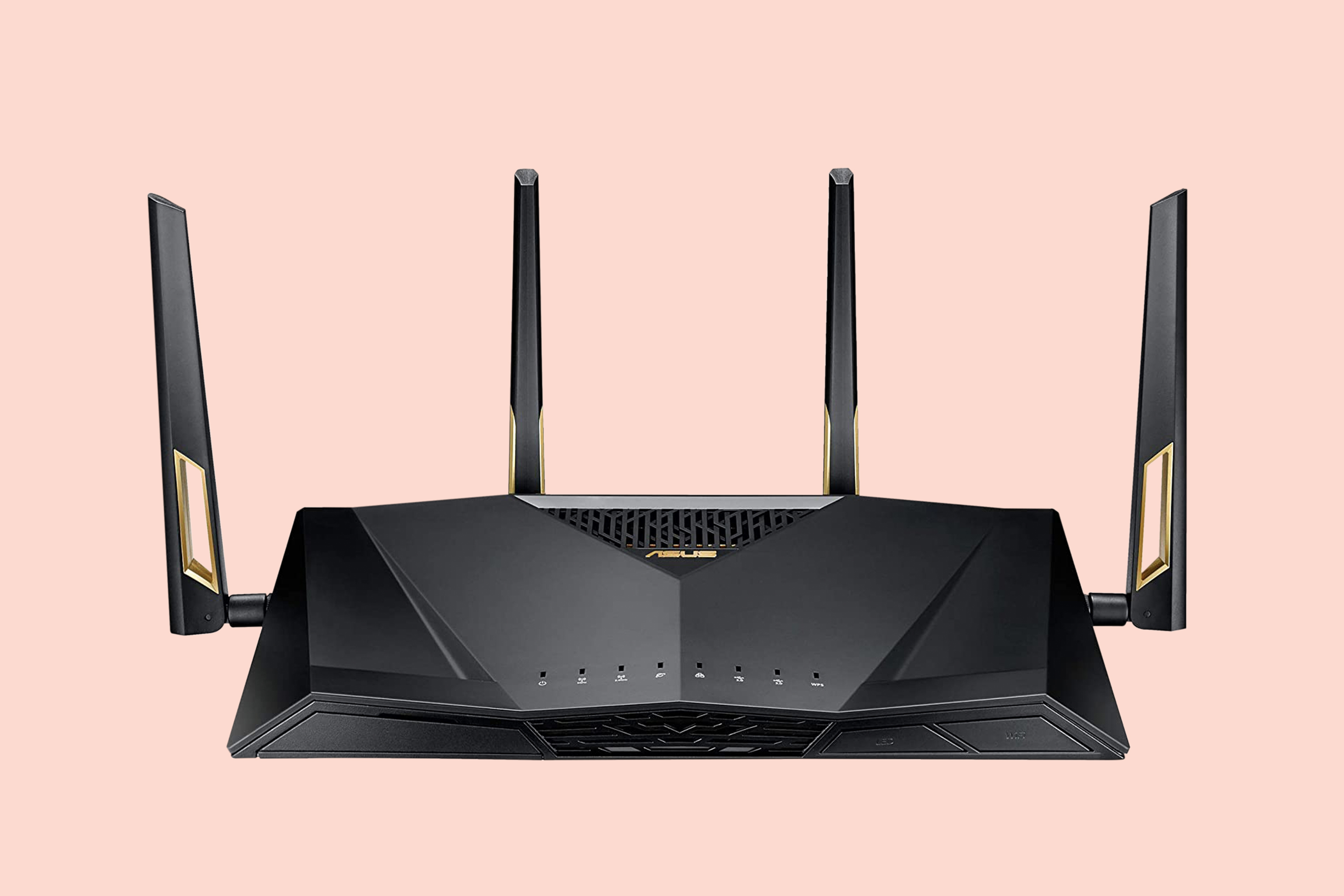
Courtesy of Amazon
The Asus RT-AX88U can make the most out of a fiber optic connection, wirelessly and with a wired connection. The dual-band router uses MU-MIMO (multi-user, multiple input, multiple output) to send data to up to four devices and receive data back from them all at the same time. It is capable of reaching speeds of 1,148Mbps on the 2.4GHz band and 4,804Mbps on the 5GHz band, when connected to Wi-Fi 6-capable devices.
Even when used with Wi-Fi 5 devices (which is the Wi-Fi technology most of your devices probably use), the RT-AX88U can hit wireless speeds of over 300Mbps easily or even reach close to around 900Mbps with some newer laptops.
For those who want a fast, steady connection every time, this router has eight ports that support gigabit speeds so you can connect your desktop, gaming console, streaming device or any other device that pulls a lot of data.
Hooking up devices directly with an Ethernet cable is the best way to get at or near the internet speed you signed up for. It also leaves more room in the wireless frequencies, for faster connections for smartphones, tablets or any device you’d like to use freely around the house.
Beyond its connection capacity, the RT-AX88U supports beamforming, a mode that transmits broadcasted signals directly at the devices that are connected to the router, which helps improve range and speed.
It also has a “Smart Connect” feature, which automatically assigns devices to the router’s 2.4GHz or 5GHz band to achieve optimal speeds, and Quality of Service (QoS) settings to prioritize data traffic for certain devices (you could choose to prioritize online gaming or video streaming, for example). Lastly, it offers parental control and an integrated security system to help block malware.
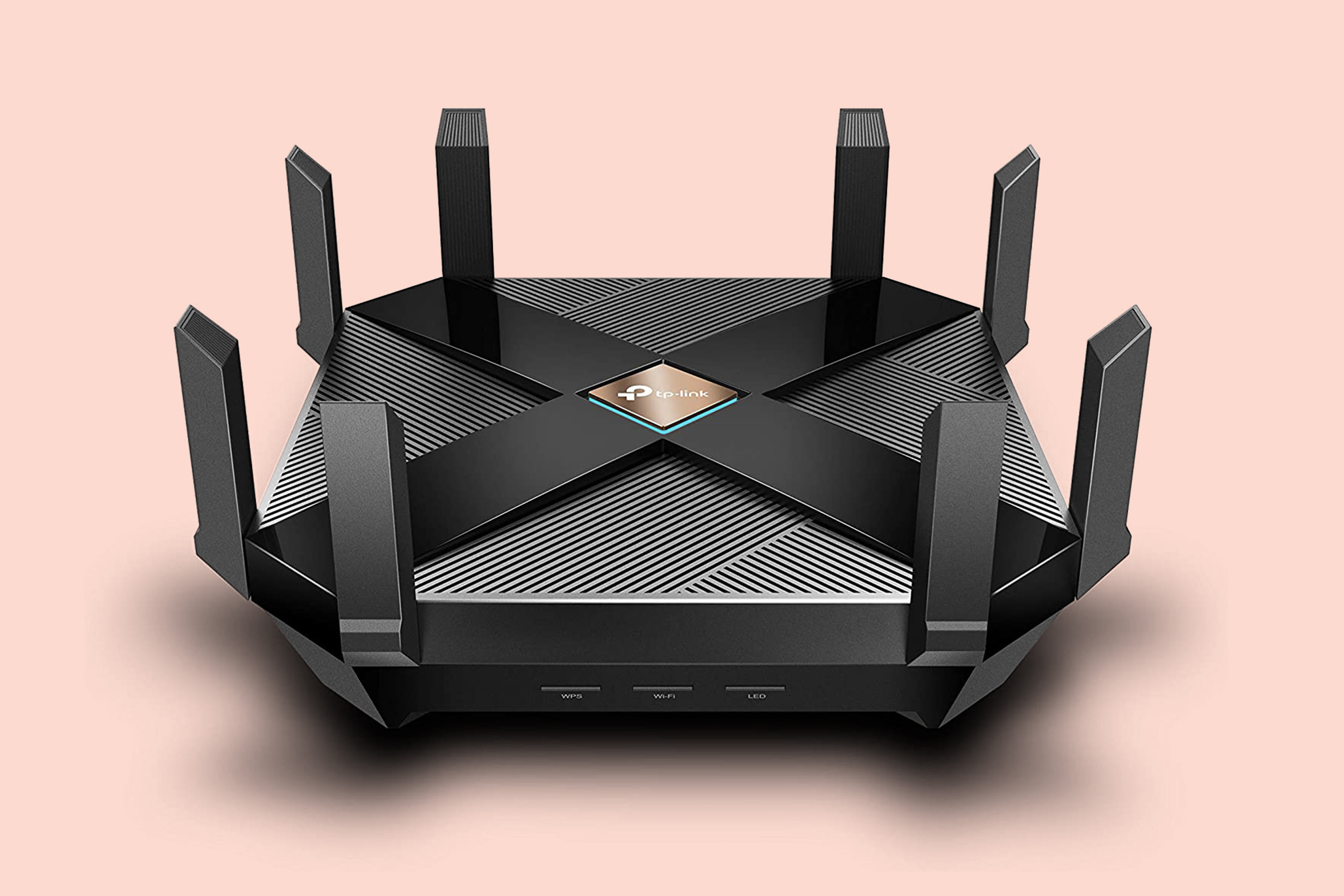
Courtesy of Amazon
The Archer AX6000 is just as capable as the Asus RT-AX88U and can often be found for around $50 less.
Just like the Asus RT-AX88U, the Archer AX6000 features dual-band and MU-MIMO technology, eight gigabit ports, beamforming, a “Smart Connect” feature, a built-in security system, parental controls and QoS controls.
The AX6000 even has an additional port for 2.5Gbps connections, a feature the RT-AX88U lacks. It also supports link aggregation, which lets you sync two Ethernet ports to support a wired connection of up to 2Gbps.
While users have found that the Asus RT-AX88U delivers faster speed at shorter distances, the AX6000 may offer a slightly better range, making it an excellent choice for large homes.
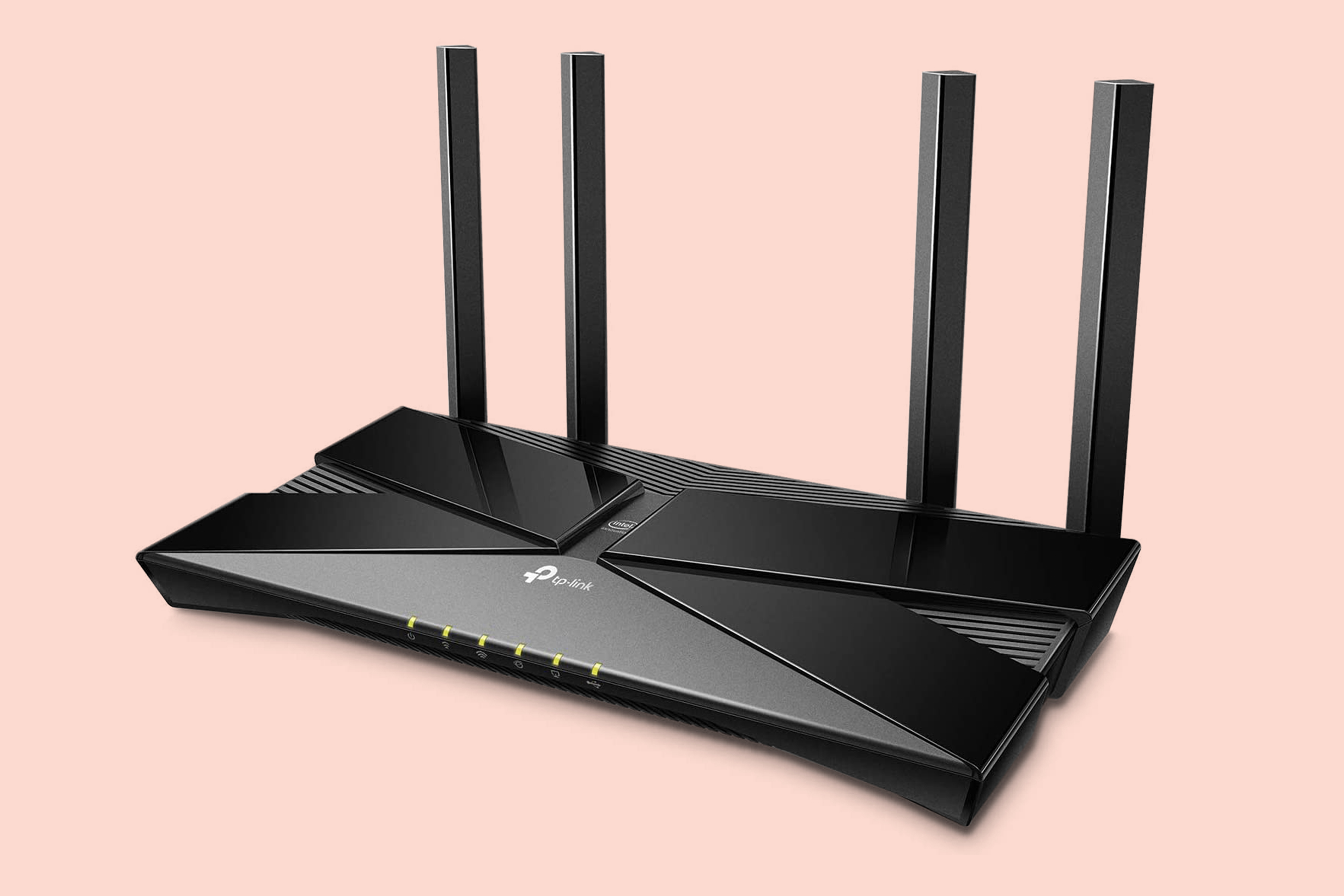
Courtesy of Amazon
Usually on sale for around $130, the Archer AX50 is roughly $100 cheaper than our Best Overall and Best Overall runner-up picks while still delivering solid speeds and features typically found on high-end Wi-Fi 6 routers.
While the AX50 doesn’t have a multi-gig port (ports that are capable of speeds over 1Gbps), it does support link aggregation. This feature allows you to combine two of the router’s four gigabit ports in case you ever need a 2Gbps connection.
When it comes to speed, the AX50 is designed to reach up to 2,402 Mbps on 5GHz band and 574 Mbps on the 2.4GHz. In the real world, where there are walls in the way and other devices causing interference, users have been able to get speeds of over 500Mbps while being a room away from the router.
Farther away, speeds can start to drop to about 200Mbps. So the AX50 might not be ideal for homes larger than 2,500 square feet. However, keep in mind 200Mbps from fiber optic should be more than enough for 4K streaming, online gaming and general web surfing on several devices simultaneously.
4. Best for low prices: TP-Link AC1900 Archer A9 Smart Wi-Fi Router
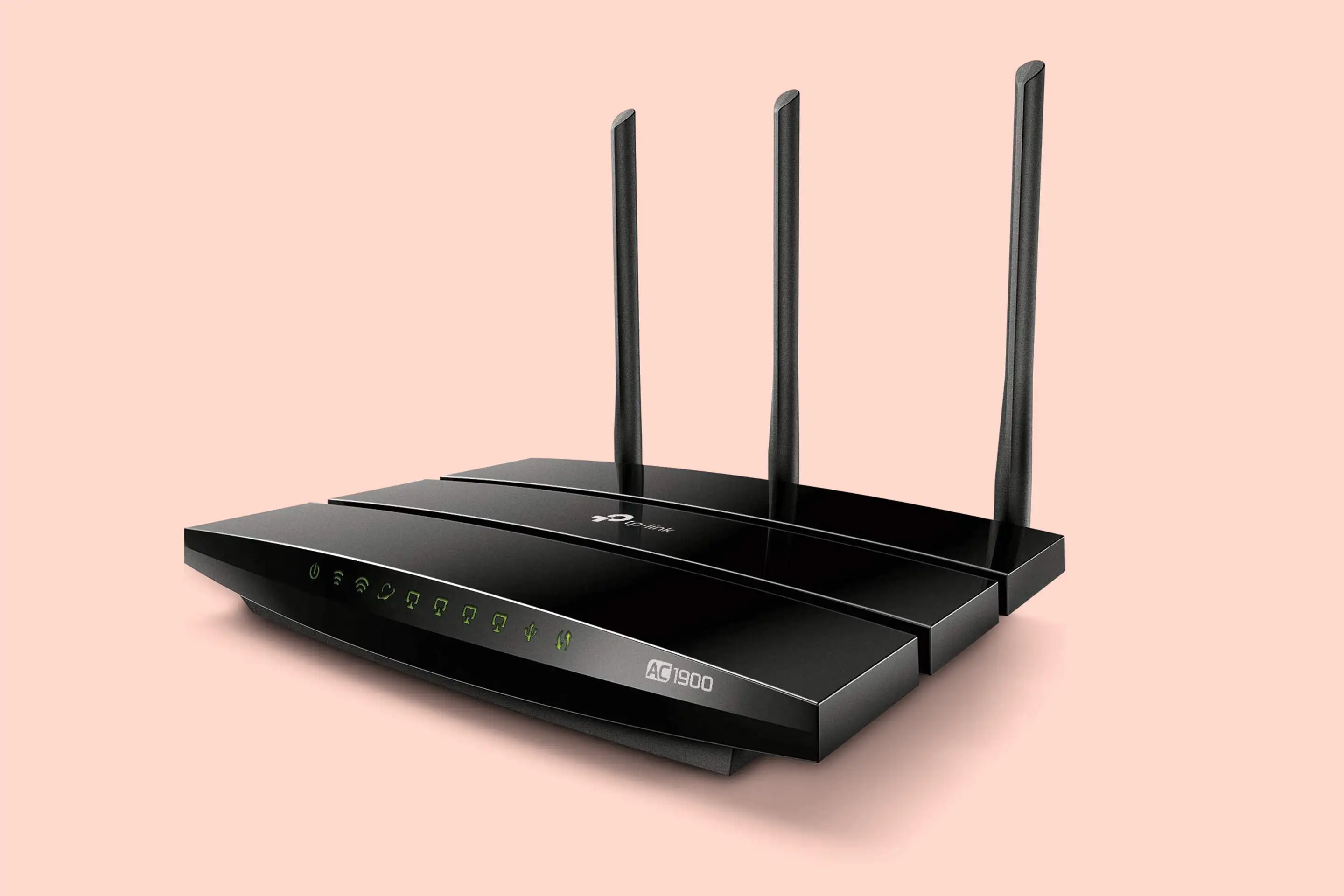
Courtesy of Amazon
The Archer A9 has dual-band, MU-MIMO and beamforming technology to deliver speeds of around 600Mbps on the 2.4GHz and 1,300Mbps on the 5GHz band. Users with internet plans of 400Mbps have reported getting near-perfect speeds while in the same room as the router and closer to 100Mbps in rooms one floor away. (Note that top speeds always depend on your plan’s bandwidth — that is, the maximum amount of data that can be transmitted at any given time.)
Some additional helpful features include four gigabit ports, a firewall, a guest network to keep visitors on a separate connection (this keeps your network isolated from possible malware from outside devices) and parental controls. The Archer A9 even works with Amazon’s Alexa. You could, for example, use voice commands to tell the router to prioritize the speeds for your laptop or streaming device on your TV.
For around $80, the Archer A9 can deliver outstanding performance in a small house or apartment, where only one or two people are connected at the same time. Households with frequent online gaming and simultaneous 4K Netflix streaming on multiple devices, might be better off with one of the routers mentioned above.
Do keep in mind that the Archer A9 is a Wi-Fi 5 router (it uses the 802.11ac Wi-Fi standard). Most smartphones, laptops and other connected devices nowadays are Wi-Fi 5, but newer devices, like the iPhone 11 and 12, already feature Wi-Fi 6 (802.11ax) capabilities. These devices can reach faster speeds, and at greater ranges, when used with a Wi-Fi 6 router (the ones labelled with an “AX”).
This means that buying a Wi-Fi 6 router would ensure optimum network performance for years to come. However, if you’re not planning on buying new devices for a while, and you’re looking to save some money, the Archer A9 will have you covered.
5. Best router for serious gamers: Asus ROG Rapture GT-AX11000 Wi-Fi 6 Gaming Router
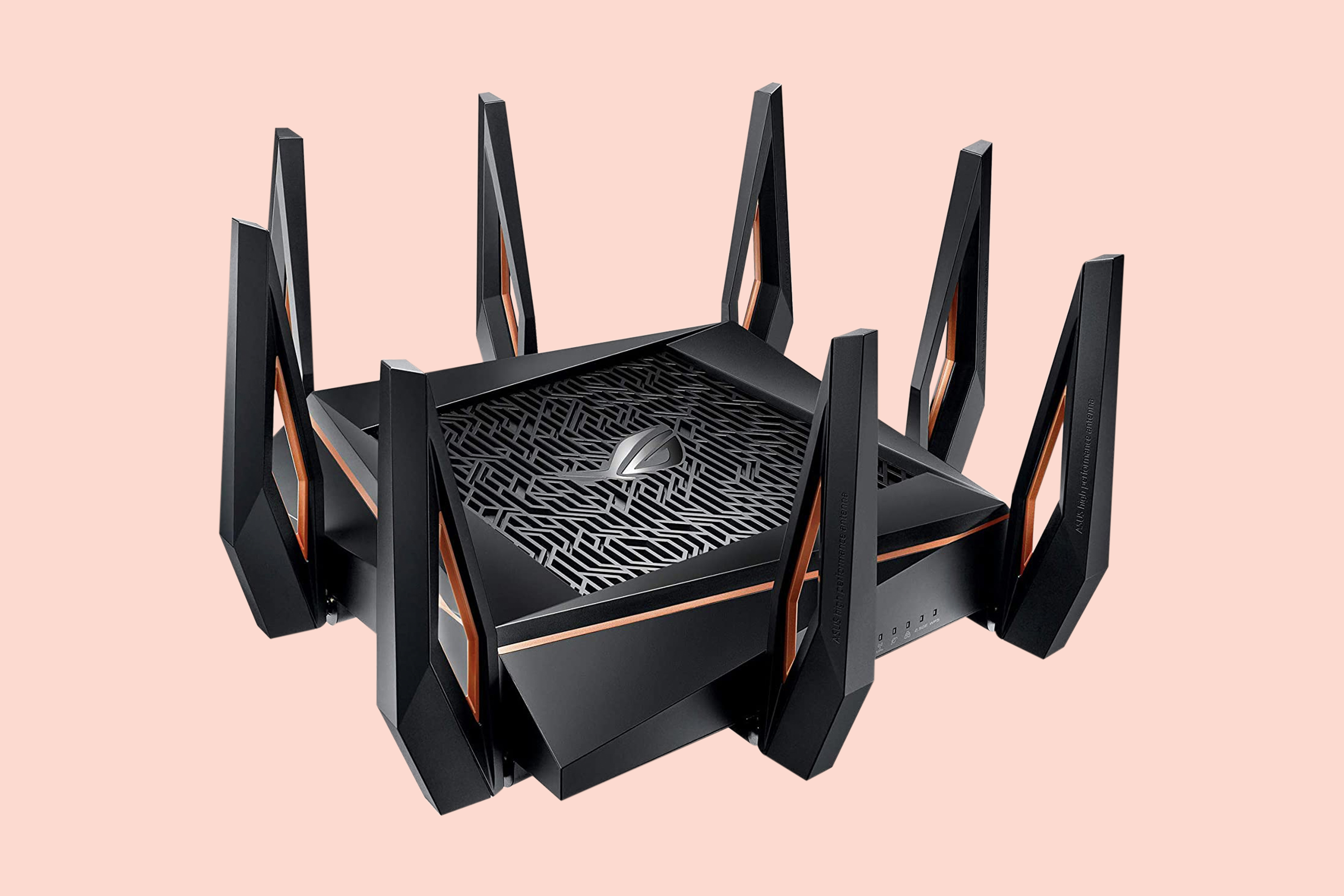
Courtesy of Amazon
Are you a hardcore online gamer who is willing to spend spend serious money to get the best connection? If so, then the Rapture GT-AX1100 ($420), a tri-band router that can deliver top-notch wireless performance, might be for you.
Since it uses three Wi-Fi frequencies (two on the 5GHz band and one on the 2.4GHz band), you can dedicate one of the 5GHz bands to your gaming console or computer so it doesn’t compete with other connected devices. This helps reduce latency — the times it takes for the game to react once the player presses a button.
Some of its other gaming-centric features include the GameFirst V and Game Boost, which are tools that analyze network traffic and optimize it so gaming data is always prioritized.
All in all, the Rapture GT-AX1100 is a powerful router packed with several networking controls that experienced users can customize to create the smoothest gaming experience possible.
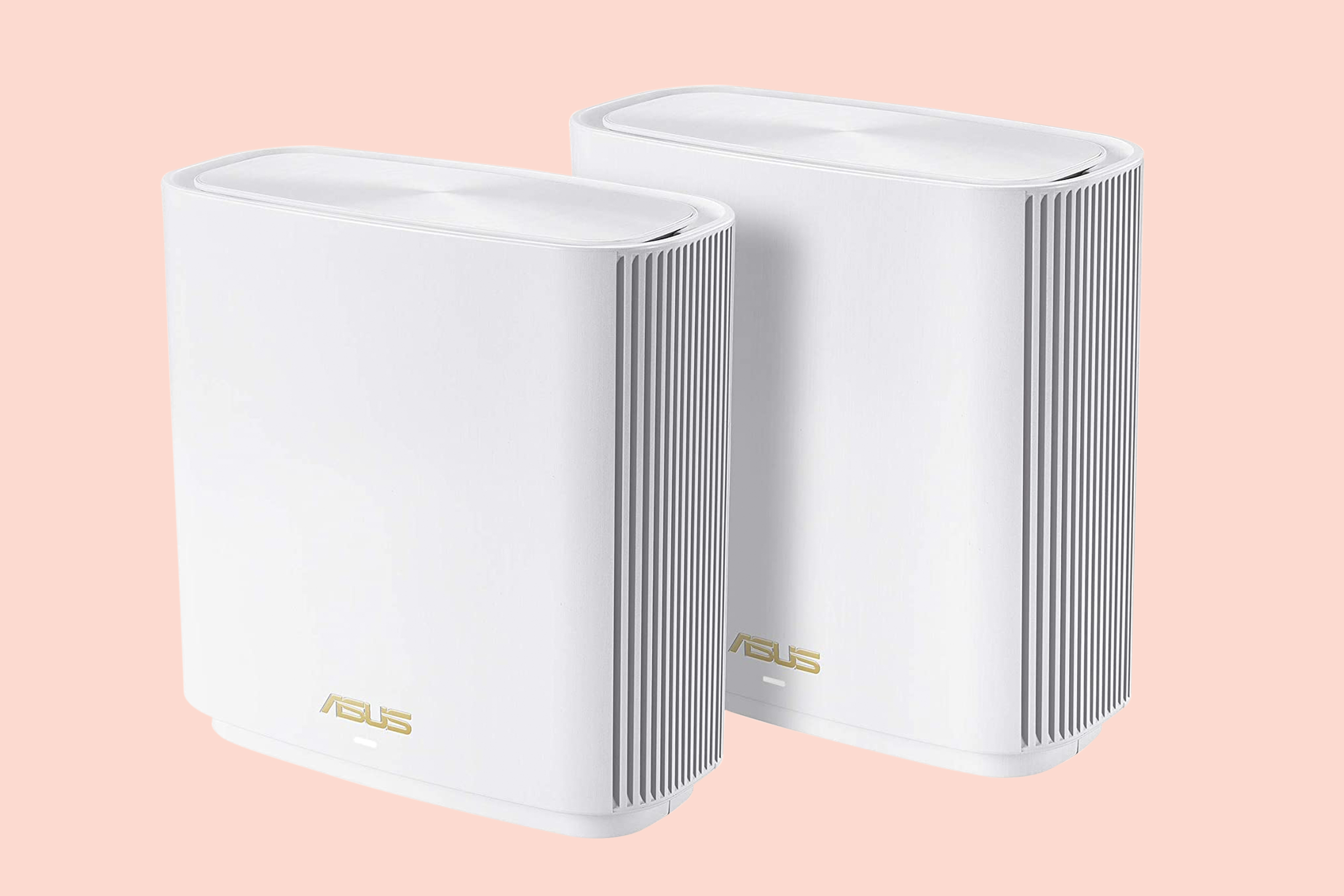
Courtesy of Amazon
Many routers nowadays boast impressive range, delivering wireless speeds over 100Mbps even from several rooms away. But for those with larger homes (or denser walls) who want a stable connection throughout, a mesh network is the way to go.
A mesh network consists of a main router that’s connected directly to your main internet cable and transmits it to nodes that are placed at different areas across the home. Devices connect to the closest node available and therefore get faster speeds.
The Asus ZenWiFI AX is one of the best mesh routers around for the price ($450). With one main hub and only one extra node, it can keep homes of up to 5,500 square feet connected at top speeds with ease. Depending on your data plan, it’s possible to get speeds of 500Mbps or more at 20 feet away from a node.
It has a WAN port (the one that connects directly to the main internet Ethernet cable) that’s capable of handling 2.5Gbps speeds. There are also three extra gigabit ports for devices you’d rather connect physically. As an additional pro, it’s a tri-band router so it can keep communication between the main hub and the nodes separate from your daily network traffic.
More from Money:
The Best Modems and Routers for Your Money, According to IT Pros
The Best Streaming Devices for Your Money
The Best Gaming PCs for Your Money















![Toni Kroos là ai? [ sự thật về tiểu sử đầy đủ Toni Kroos ]](https://evbn.org/wp-content/uploads/New-Project-6635-1671934592.jpg)


